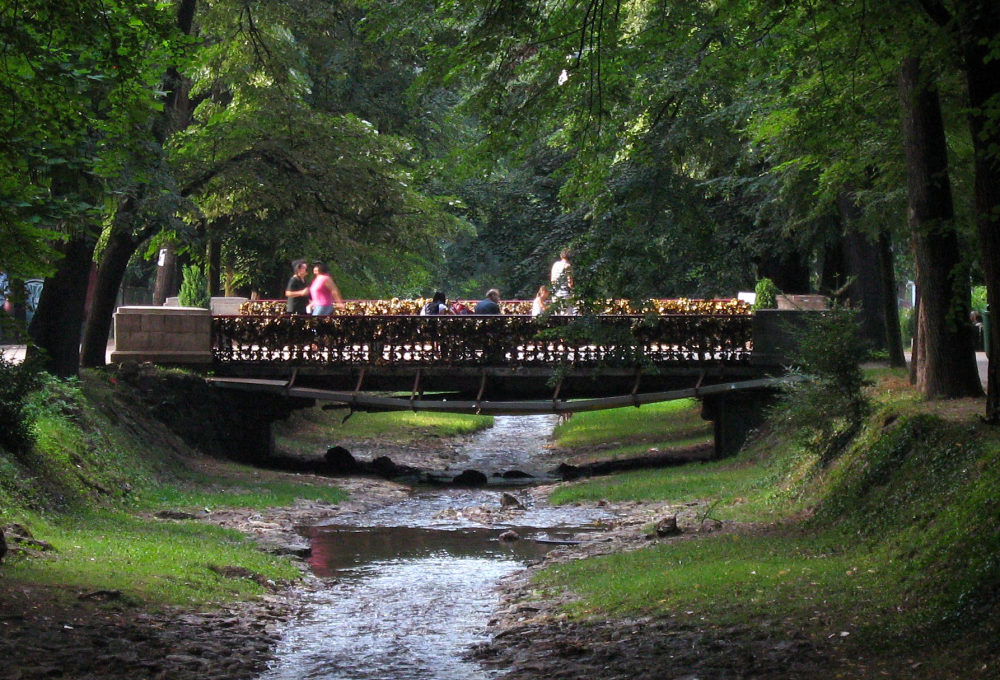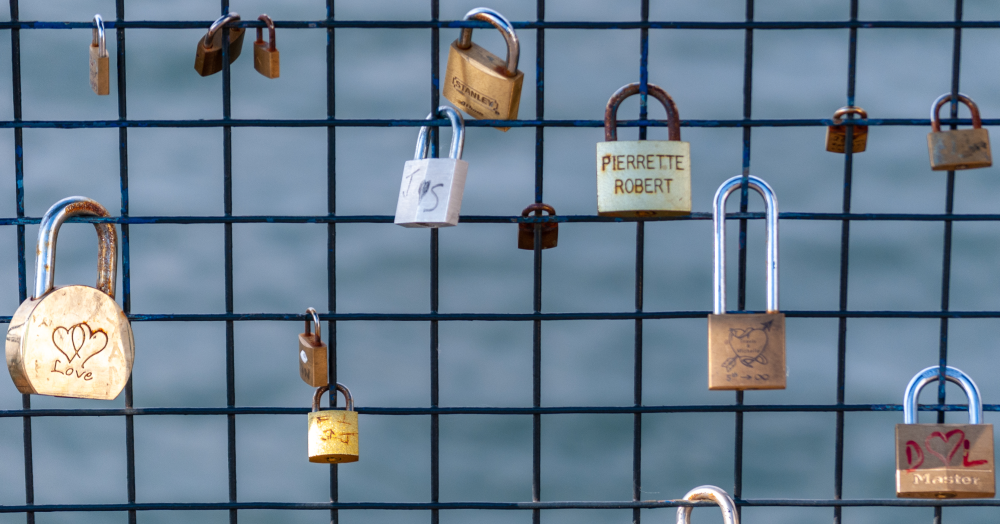Ever been crossing a bridge and found yourself faced with hundreds – or even hundreds of thousands – of padlocks? The cultural phenomenon can be seen across the globe, and has even caught on to the point of becoming dangerous in some places, so what’s the deal with all these pointless padlocks?
Love Lock Bridge
Love locks are padlocks attached to a bridge, often with the initials of a romantic couple etched or painted onto their surface. Once locked, the key is tossed into the water below. It’s widely interpreted as being symbolic of the couple’s commitment to each other, in permanently affixing themselves in the form of a padlock to a bridge of their choosing.
It’s not entirely clear when love locks began, but one of the earliest reports comes from Vrnjačka Banja, Serbia, where the love locks on Most Ljubavi (“Bridge of Love”) are said to date back to World War One. The practice is thought to have then picked up momentum in the 2000s when it became popular in Italy, spurred on by a romantic novel from Federico Moccia in which somebody sticks a padlock on the Ponte Milvio bridge in Rome.
Love locks then spread across the globe and have been the subject of several scientific papers. An unsurprising fact, perhaps, given they’re a rare modern-day opportunity to discover how customs can disseminate across the globe despite nobody being told to do it.

Most Ljubavi “Bridge of Love” in Serbia, a love lock bridge believed to be one of the oldest on Earth.
The science of love locks
The love lock was the central focus of a 2017 paper that sought to tackle the age-old issue of being an archaeologist: all your ritual subjects are too dead to ask why they did what they did. Study author Ceri Houlbrook of the University of Hertfordshire’s School Of Humanities was uniquely placed to study Manchester’s Oxford Road Bridge in the UK, which she describes in the paper as “barely recognizable as a bridge”. It was here that Houlbrook first noticed and photographed seven padlocks on February 12, 2014.
Less than a week later, another was added. Then another arrived within a month, but by the end of May, there were a total of 15, demonstrating the lock locks’ “magnetic-like effect” in which deposits attract more deposits. The study continued for three years, in which time 409 love locks on Manchester’s “barely recognizable as a bridge” Oxford Bridge.
Then came the task of trying to interpret the why during the love lock bridge’s formation.

A love lock bridge at Lonsdale Quay in Vancouver, Canada.
“Most often the practitioners had deposited love-locks with their partners as statements of romantic commitment, often while on holiday (the deposit becomes an inverted souvenir) or while attending special events, such as shows at the nearby Palace Theatre,” explained Houlbrook.
“These interviews revealed that deposition was occasionally timed to coincide with an anniversary, engagement, or birthday. However, other motivations were made apparent in these interviews; for example, one elderly couple in Bakewell attached their love-lock to a bridge to celebrate a recent lottery win.”
As for what all this can teach us about archaeology, the study of a little bridge in Manchester tells us what can be learned when we look at ritual deposits as an ongoing practice rather than the finished article, observed retrospectively from a distance of several millennia in the future.
“Archaeologists may take from this the lesson that accumulations should not be studied at one static point in time, and this will prompt us to question assumptions about the place, people, pace, and purpose of historic and prehistoric accumulations,” concluded Houlbrook. “And yet three years and 409 lovelocks later, the author still believes this custom has more to teach us.”

Local authorities are rarely so charmed by love locks, as demonstrated by this person removing love locks from Charles Bridge in Prague.
The dangers of love locks
It’s a romantic practice, but one that isn’t necessarily permanent. A woman reportedly traveled 9,580 kilometers (5,953 miles) from Los Angeles, United States, to Seoul in South Korea to remove a love lock with bolt cutters after said love was lost.
Costly plane fares aside, love locks have also been deemed a threat to public safety in some spaces as the sheer number of locks rendered the fences unstable. This has seen lock locks be removed by councils from Paris to Melbourne.
So, while it could be argued that there are greener, cheaper, and safer rituals for professing your love, there’s undeniably a lot of academic intrigue surrounding this quirky contemporary depositional practice.
All “explainer” articles are confirmed by fact checkers to be correct at time of publishing. Text, images, and links may be edited, removed, or added to at a later date to keep information current.
Source Link: Why Are There So Many Padlocks Attached To Bridges?